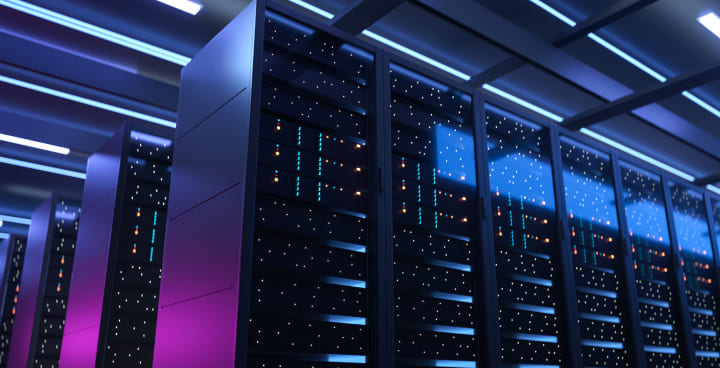The amount of data generated is growing at a dizzying pace. Every day, billions of IoT (Internet of Things) devices connect to the network, sending huge amounts of information. Traditional cloud data processing methods are becoming insufficient, which is leading to the growing popularity of a new approach - Edge Computing. In this article, we will look at what Edge Computing is, what applications it has, and what role it may play in the future of data processing.
What is Edge Computing?
Edge Computing is a data processing model in which calculations and operations take place closer to the data source, i.e. at the "edge" of the network. Instead of sending all information to a central server or cloud, Edge Computing transfers some processes to local devices, such as routers, intelligent sensors, cameras, or edge computers (edge devices).
The main goal of this approach is to reduce delays (latency) and increase efficiency by reducing the amount of data sent to central servers. As a result, Edge Computing provides faster information processing, which is crucial for real-time applications, such as autonomous vehicles or health monitoring.
Edge Computing Applications
Edge computing is widely used in various industries, from manufacturing to healthcare. Here are some key areas where this technology is being used:
1. Internet of Things (IoT)
In the context of IoT, edge computing allows data to be processed directly on the devices collecting the information, reducing the need to send it to remote servers. For example, smart sensors in factories can analyze data locally, detecting deviations in machine operation and immediately informing when maintenance is needed.
2. Industry 4.0
In the manufacturing industry, edge computing is an integral part of the Industry 4.0 concept, where smart factories use local data processing to monitor and automate production processes. This allows for real-time response to changing conditions and minimizes the risk of failures.
3. Autonomous vehicles
Autonomous cars generate huge amounts of data from cameras, lidars, and sensors that need to be processed almost instantly. Sending all this information to the cloud would create too much latency, so edge computing is key to processing this data locally, allowing for faster response to changing conditions on the road.
4. Healthcare
In healthcare, patient monitoring devices can continuously analyze patient vital signs, such as blood pressure or heart rate, and automatically notify medical personnel of anomalies. By processing data locally, the risk associated with delays in sending information to the cloud is reduced.
Advantages of Edge Computing
Compared to traditional cloud computing, edge computing offers many benefits:
Reduced latency:
Processing data locally reduces the time it takes to analyze it, which is crucial for applications that require a quick response.
Reduced bandwidth consumption:
Because only selected data is sent to the cloud, the network load and costs associated with sending information are reduced.
Better privacy and security:
Local data analysis reduces the risk of data being intercepted in transit, which is important in terms of privacy protection.
Scalability:
The ability to scale Edge Computing systems allows for efficient load management without the need to increase the power of central servers.
The future of Edge Computing in the context of IoT and Big Data The use of Edge Computing in the future will continue to grow, especially in the context of the development of the Internet of Things (IoT) and Big Data analysis. As analysts indicate, the number of IoT devices in the world will exceed 30 billion by 2025, which will make edge computing a necessity.
As technologies such as 5G develop, the possibilities of Edge Computing will increase even more. Faster connections will allow for the integration of more devices and the transfer of larger amounts of data in a shorter time, which will translate into an increase in the number of real-time applications. For example, smart cities will be able to use Edge Computing for traffic management, environmental monitoring or infrastructure management in real time.
In addition, the development of artificial intelligence (AI) and machine learning (ML) in Edge Computing will enable more advanced data analysis directly on devices, which will contribute to the creation of even more intelligent systems.
Edge Computing is a technology that will revolutionize the way data is processed, especially in the context of IoT and Big Data. By reducing latency, reducing data transmission costs and increasing security, edge computing will become a key element of modern IT systems. Companies that are already beginning to use the potential of this technology can gain a competitive advantage and respond to market needs more effectively.

